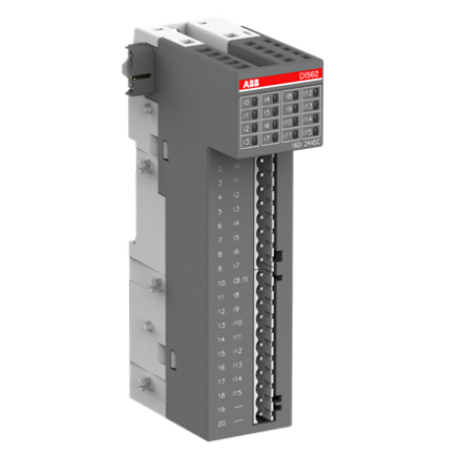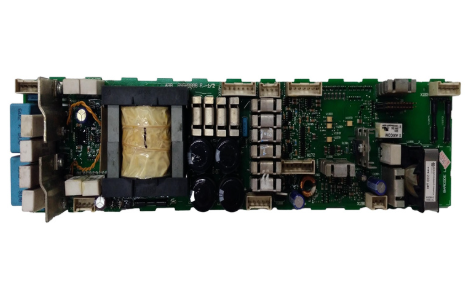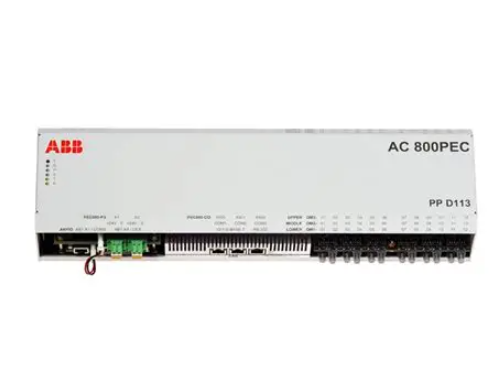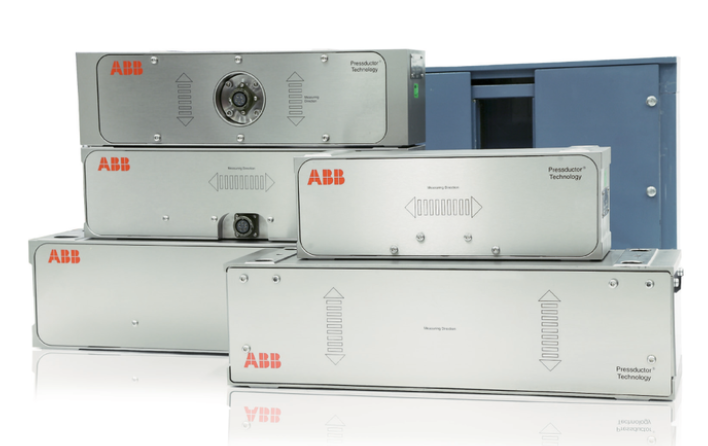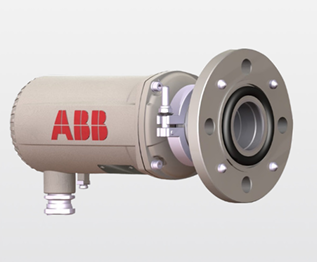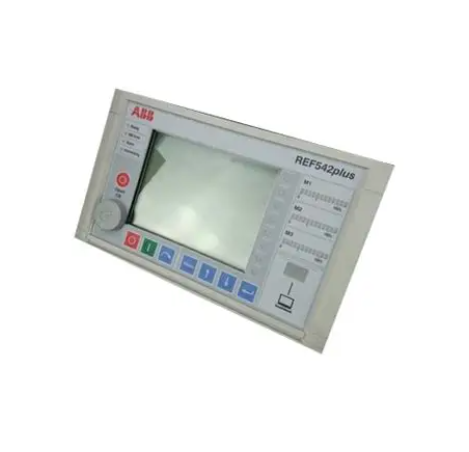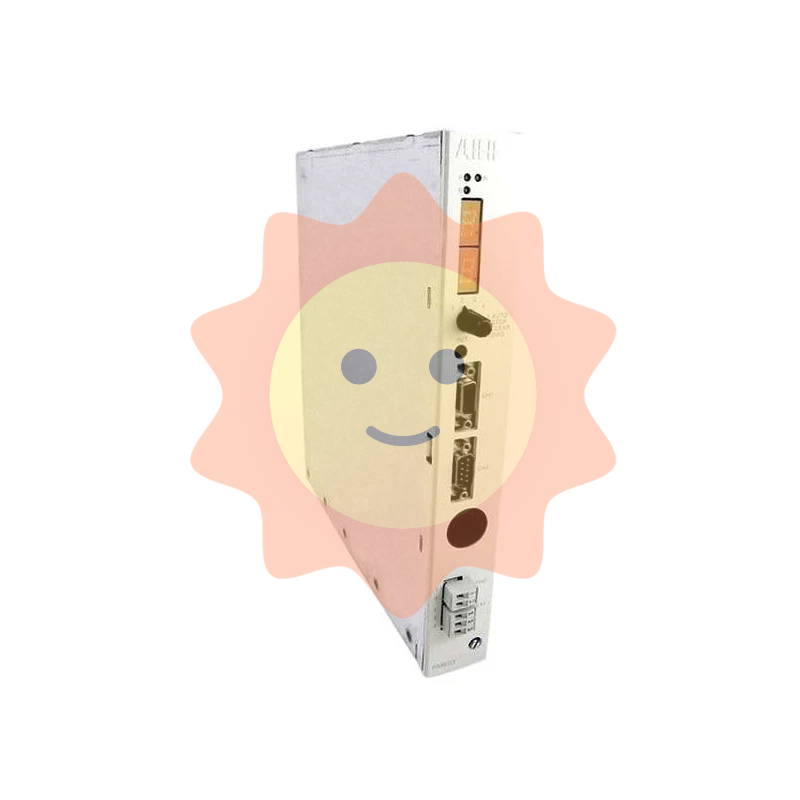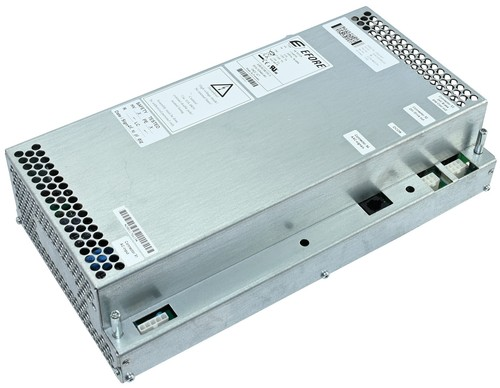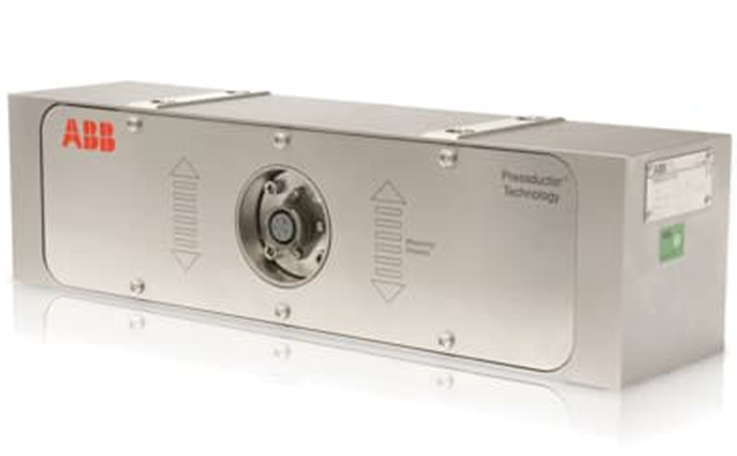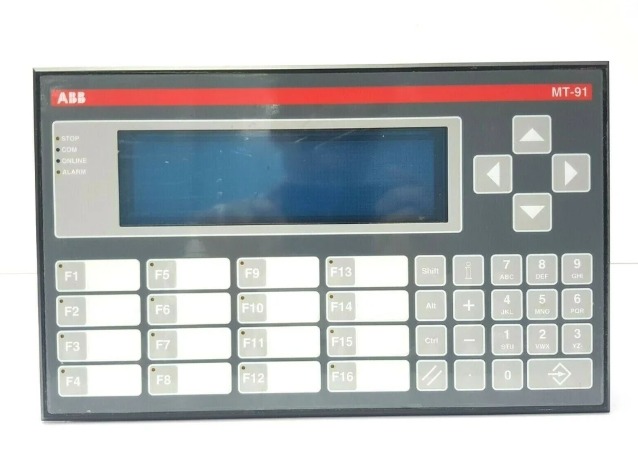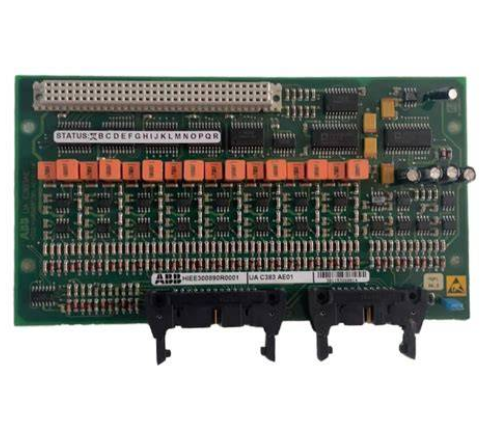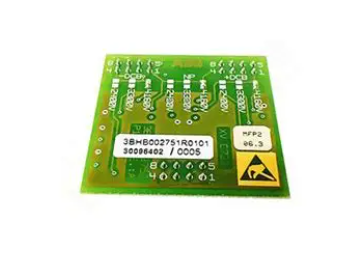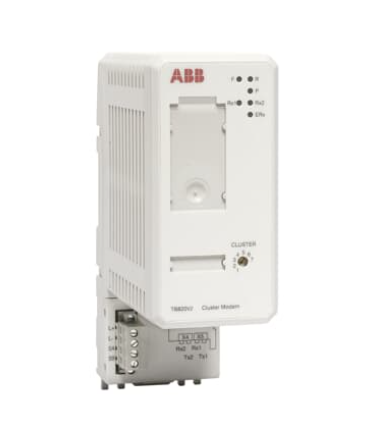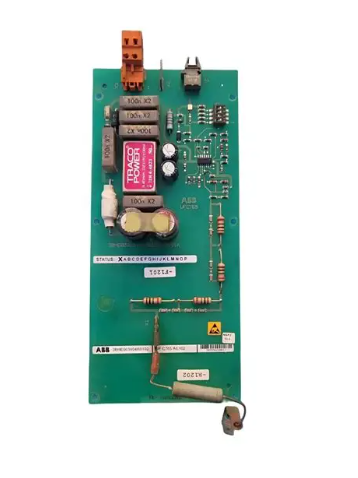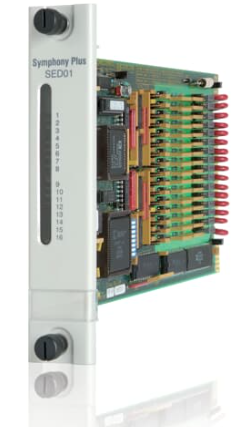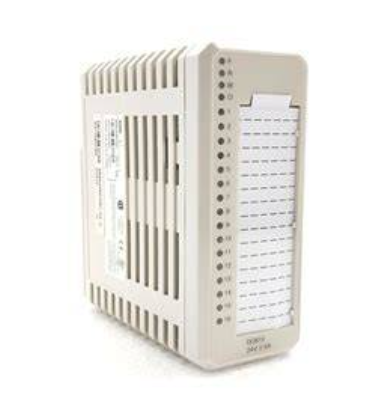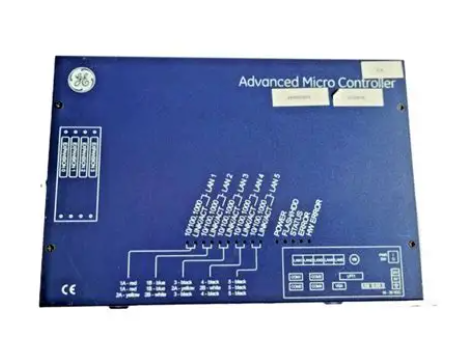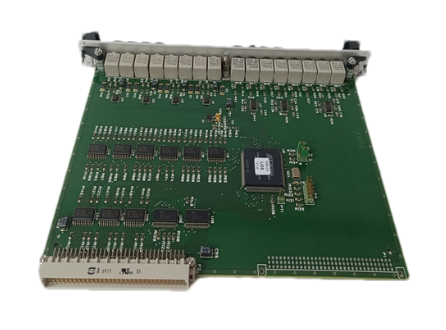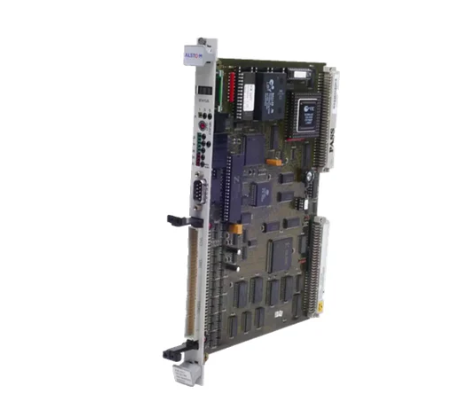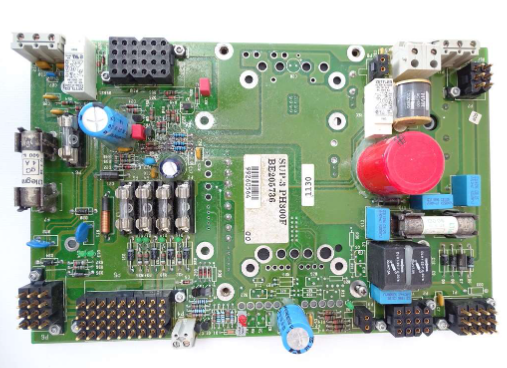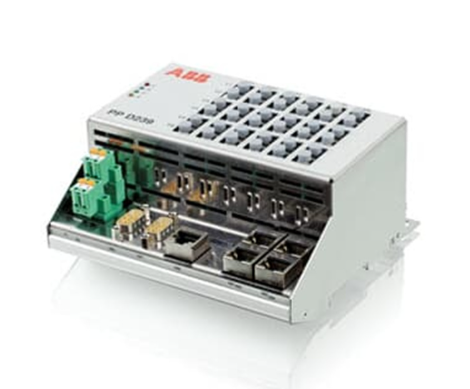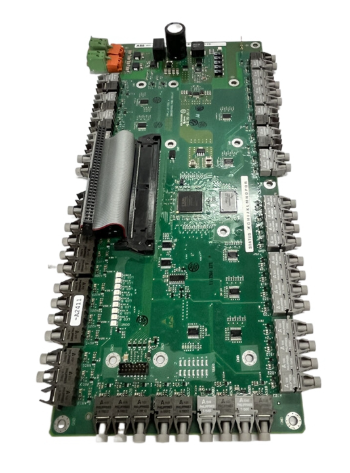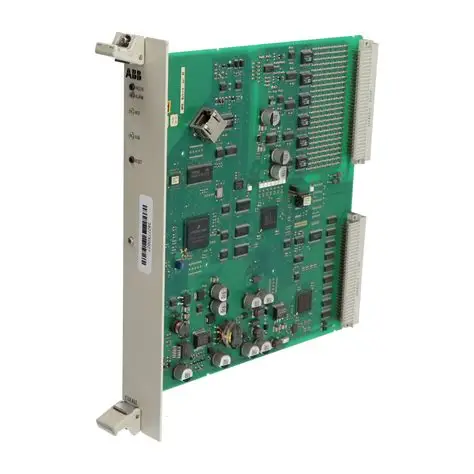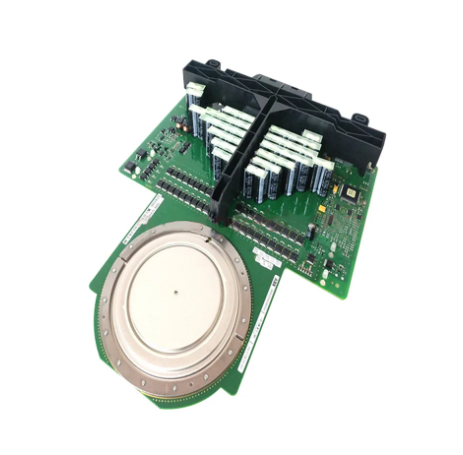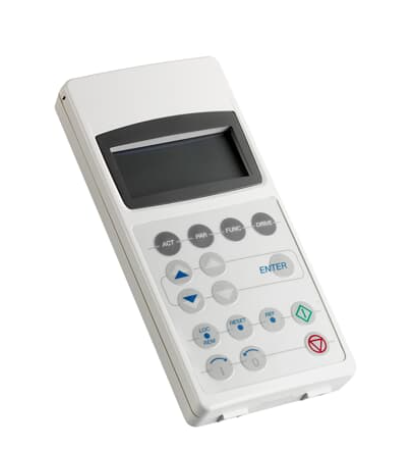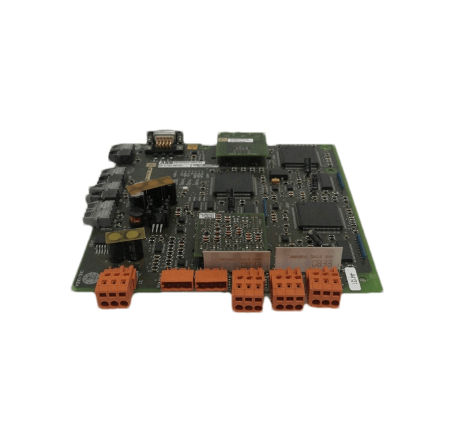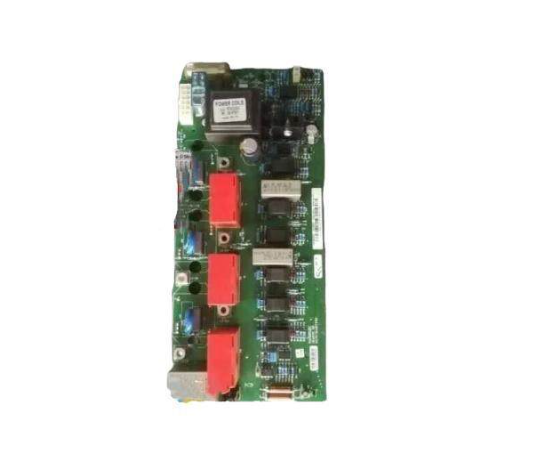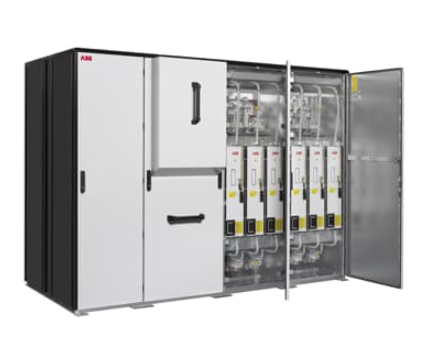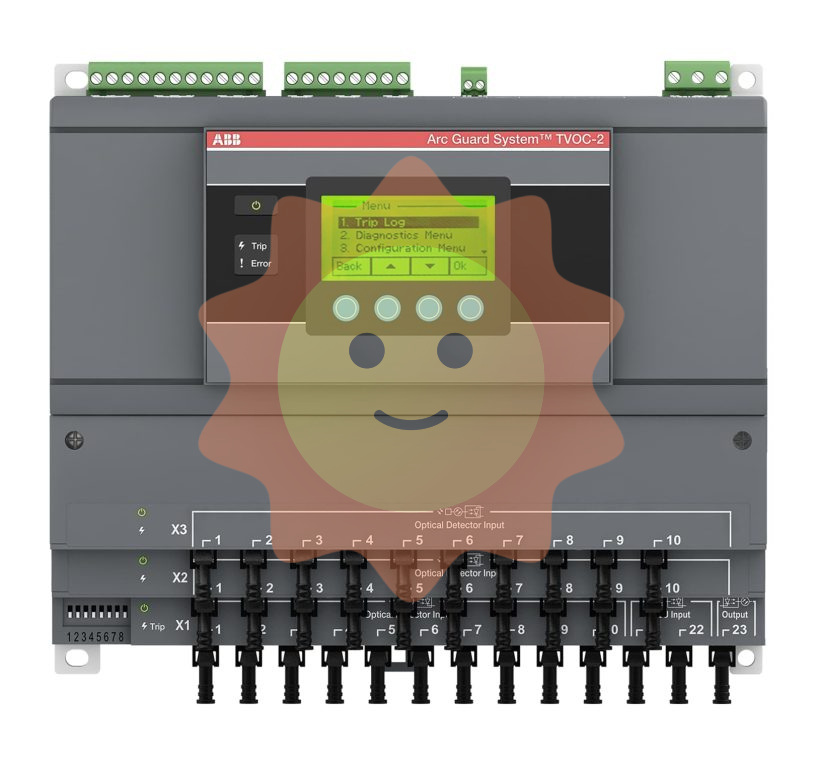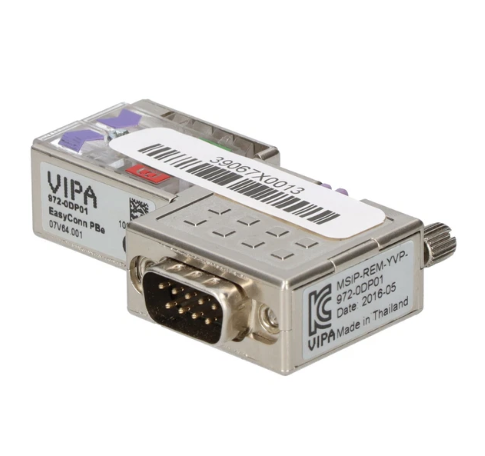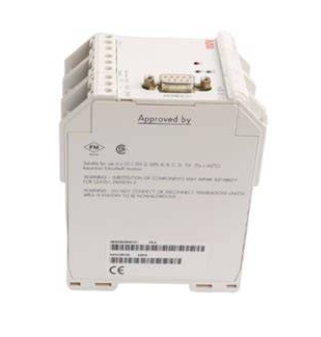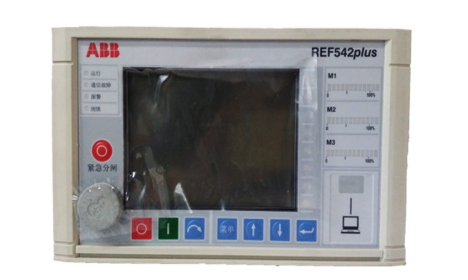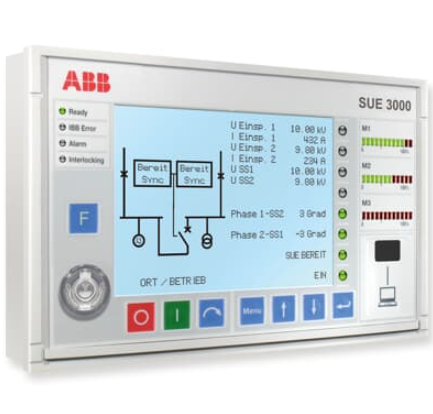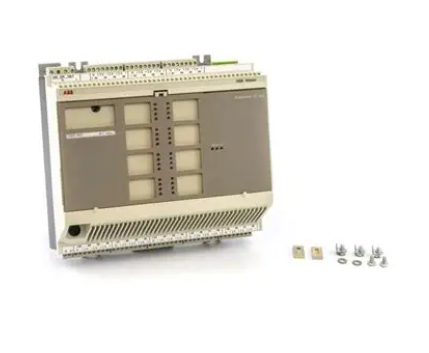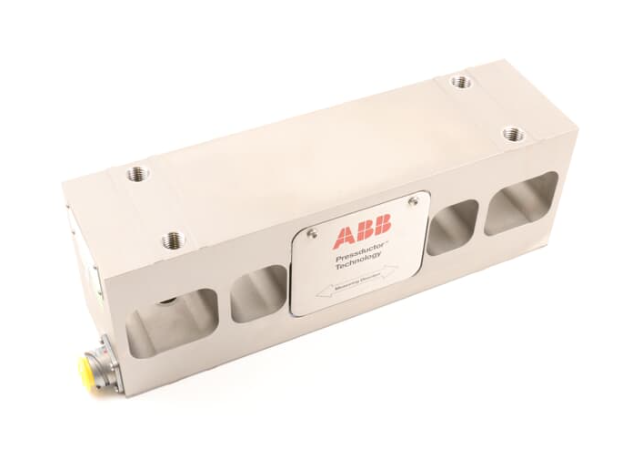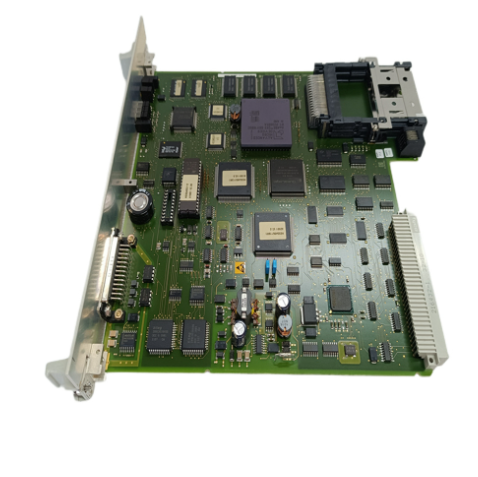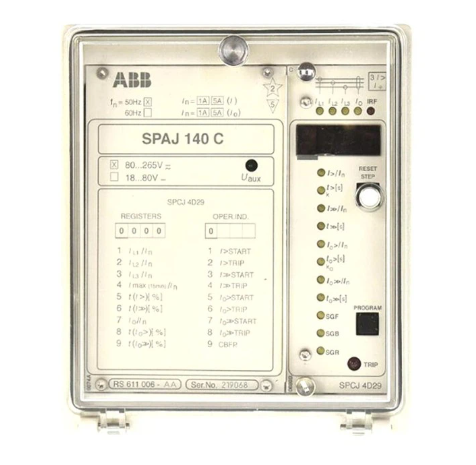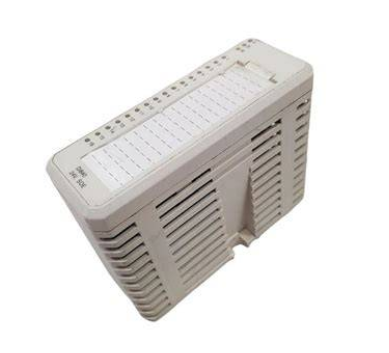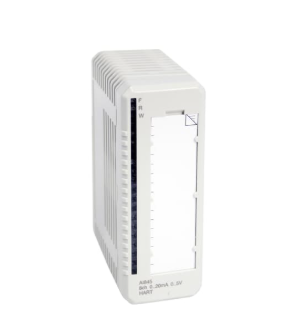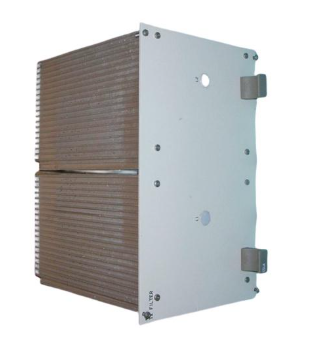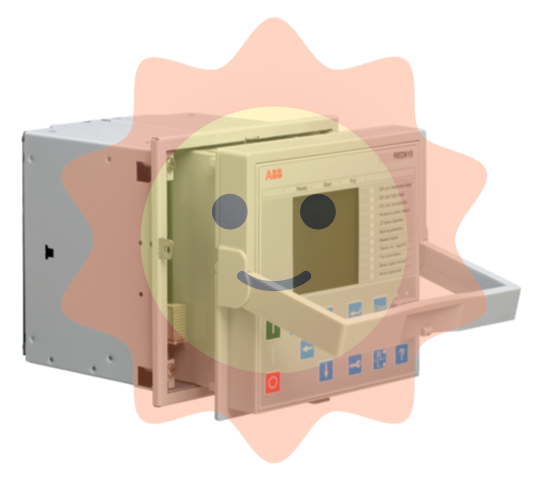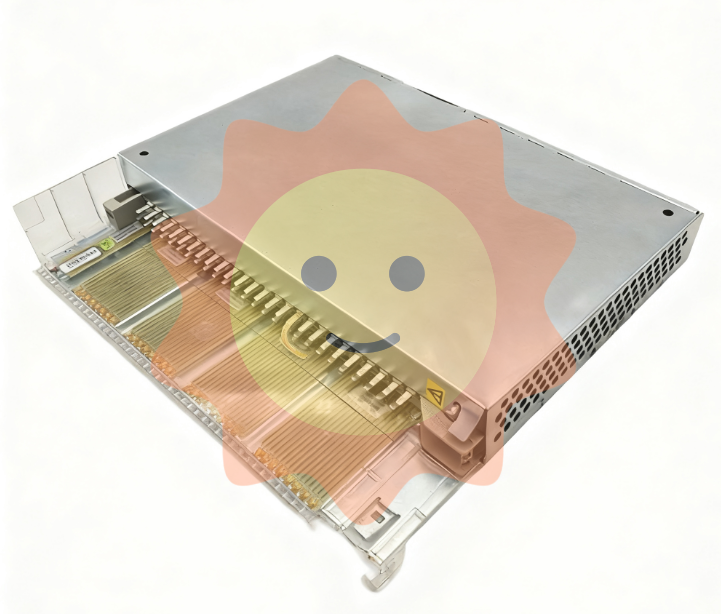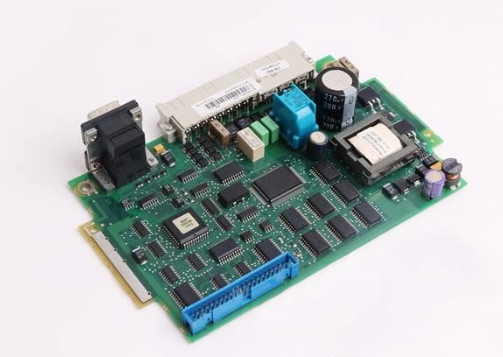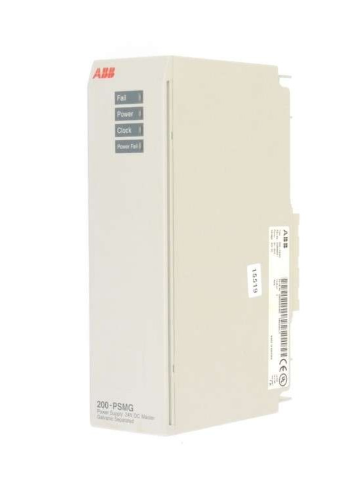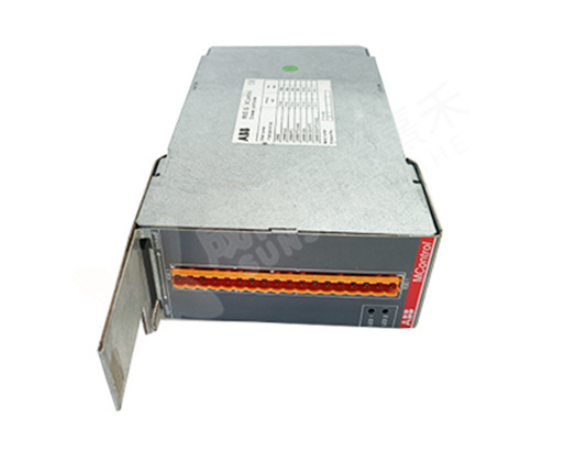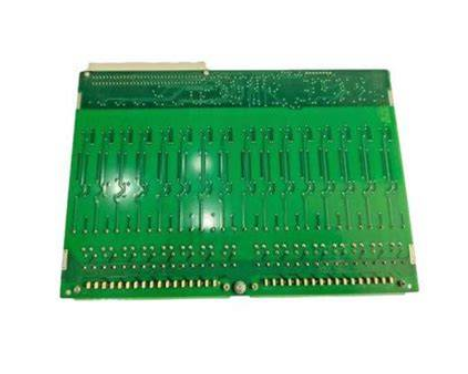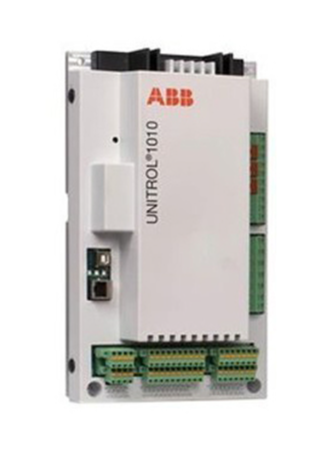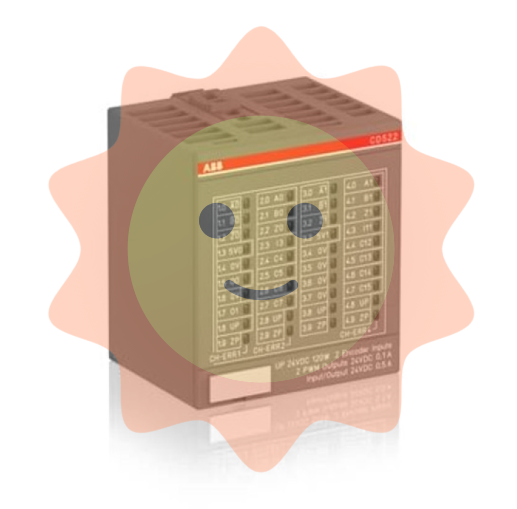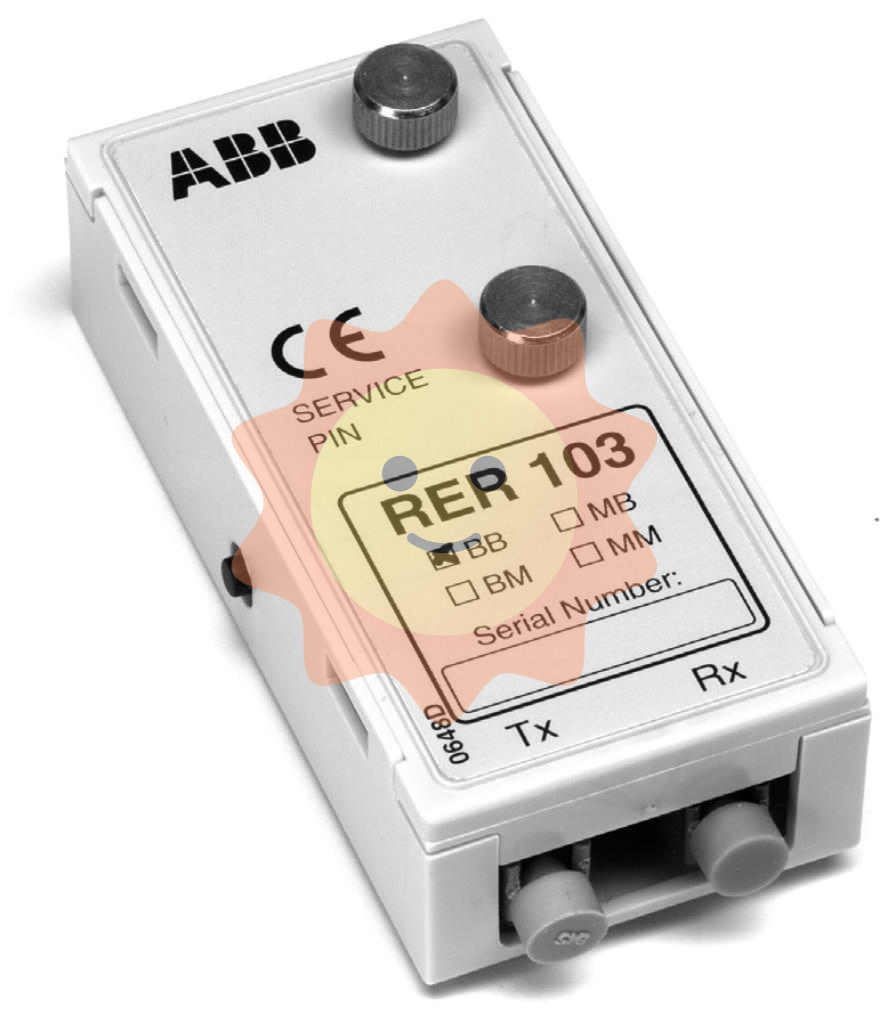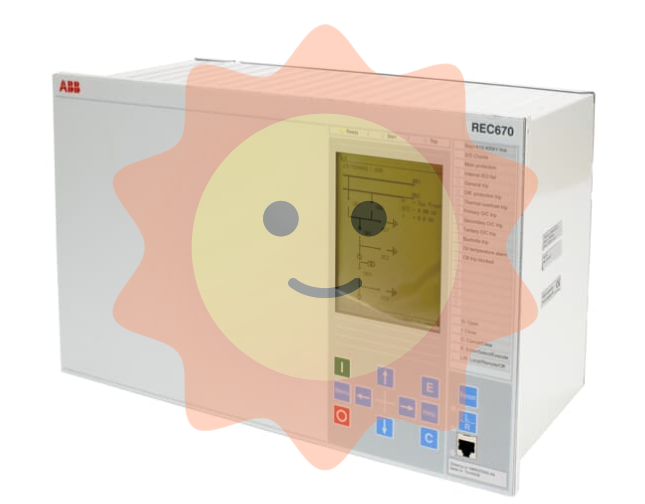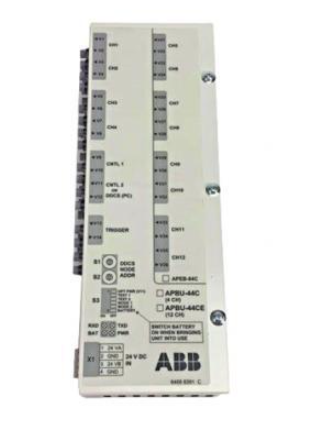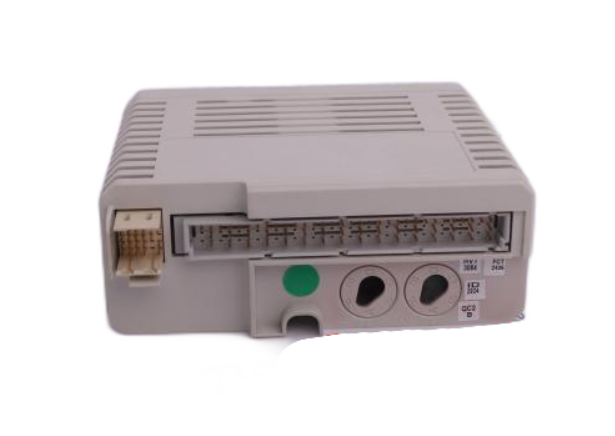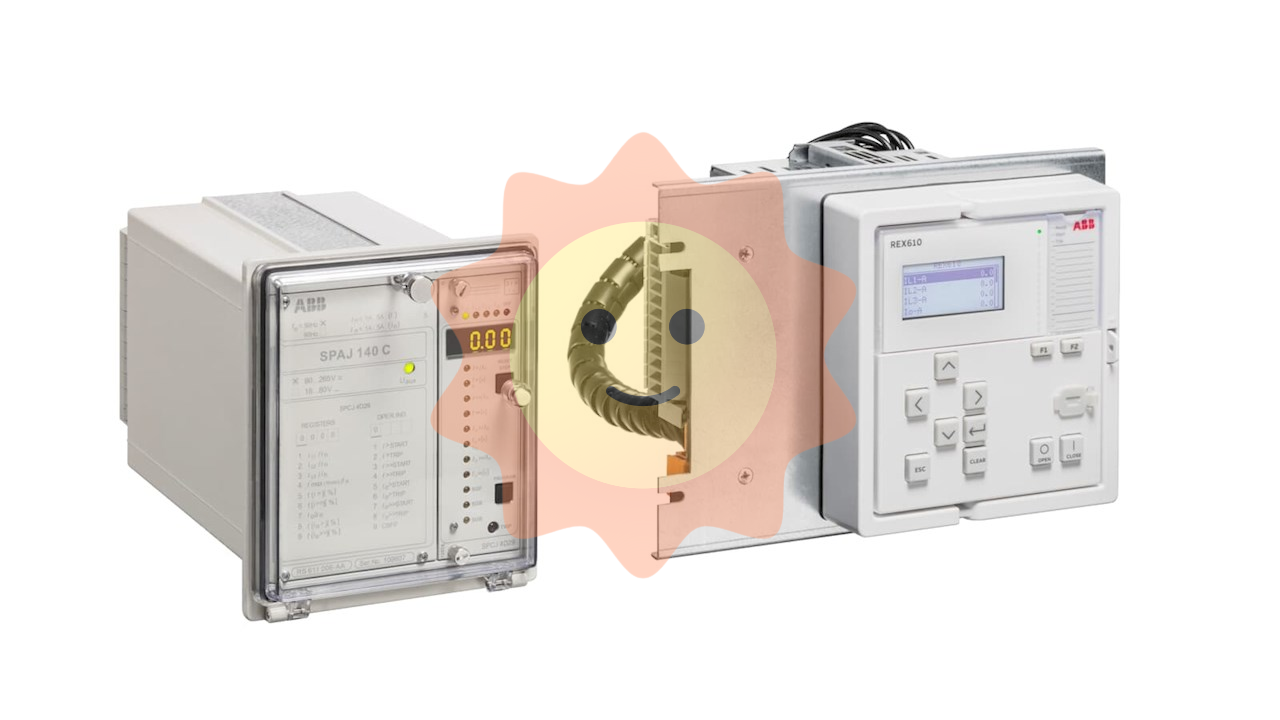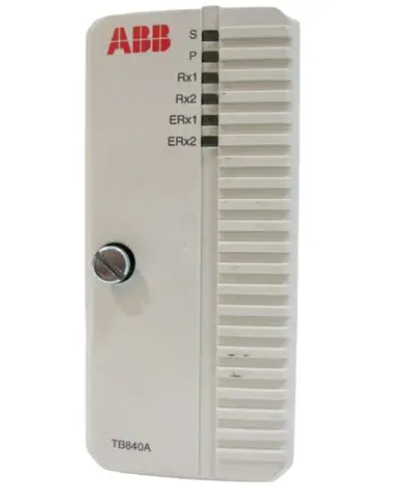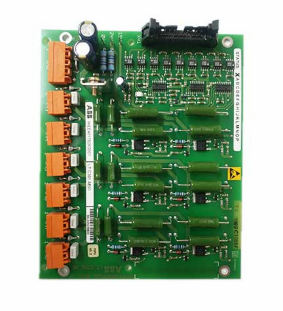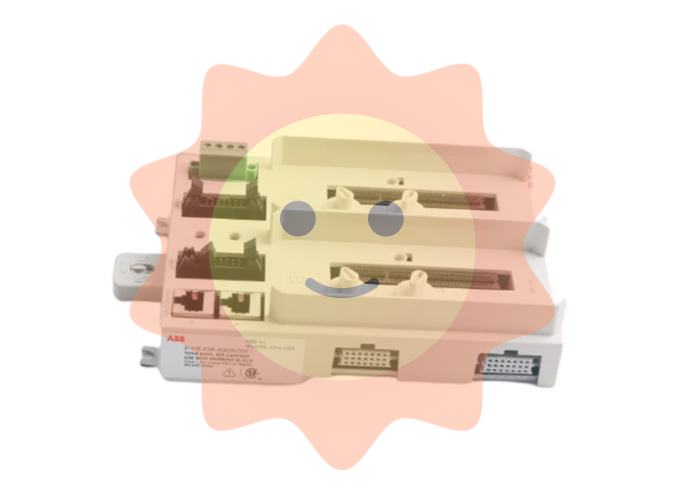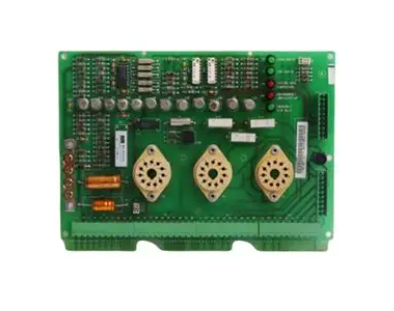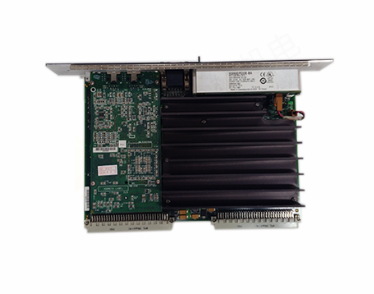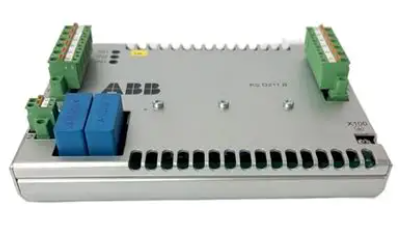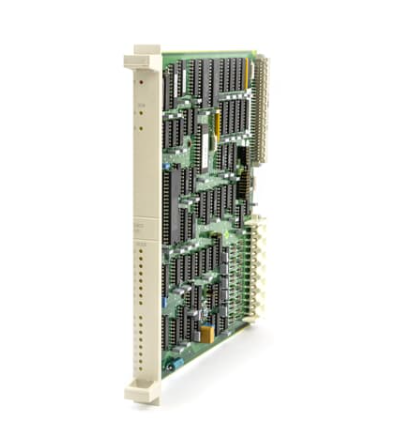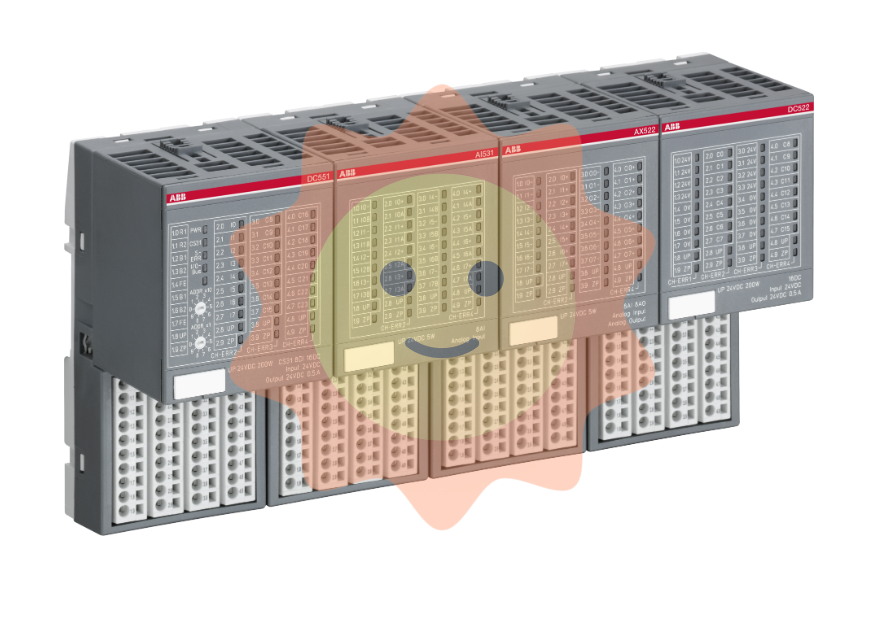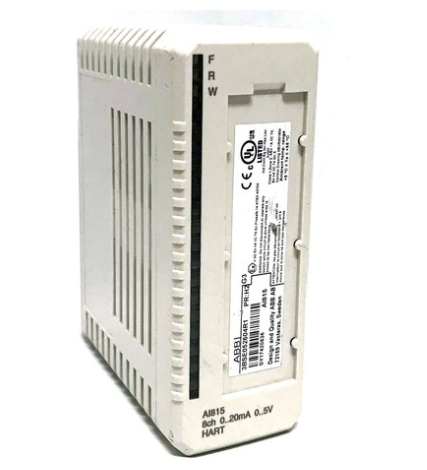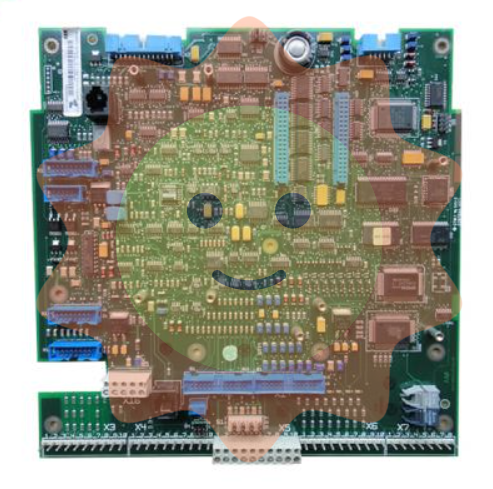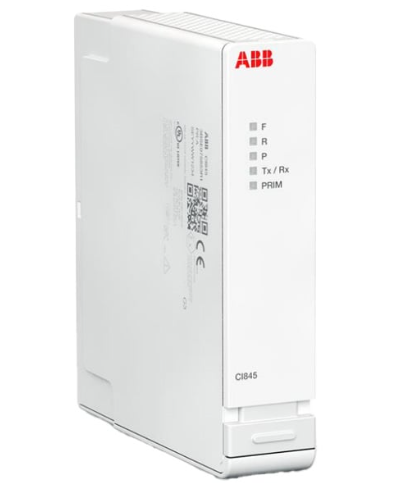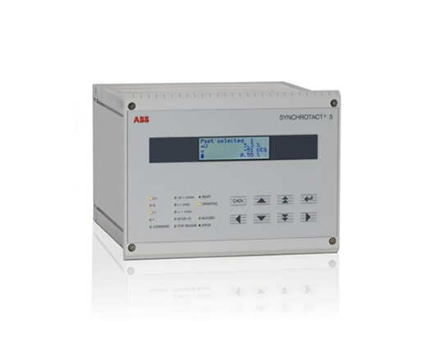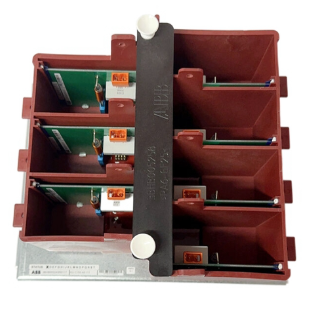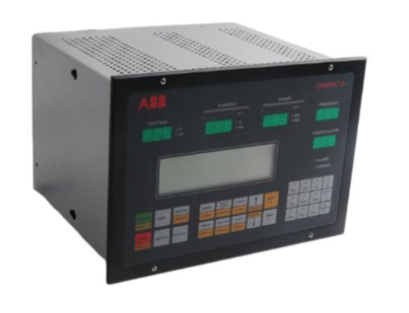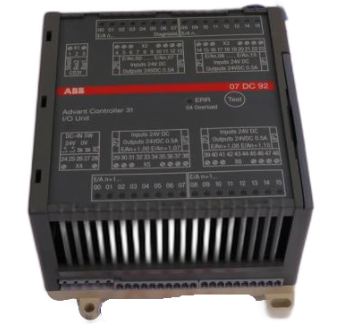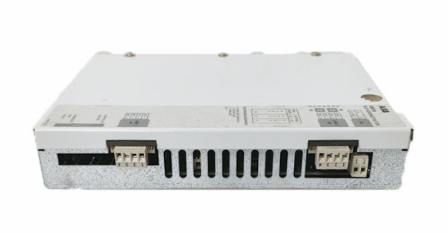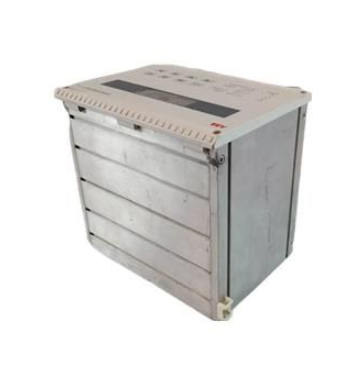ABB YPK112A - Advanced Industrial Control Module
Working principle
When the ABB YPK112A advanced industrial control module operates in an industrial control system, it first receives analog and digital signals from industrial field sensors through input interfaces. The analog signal is amplified, filtered, and processed by the front-end signal conditioning circuit, and then converted into a digital signal by an A/D converter; Digital signals are directly subjected to level conversion and isolation processing, and then these signals are transmitted to the central processing unit (CPU) inside the module.
The CPU performs logical operations and algorithm processing on input signals based on pre written and stored control programs in the module memory, generating corresponding control instructions. After processing, these control instructions are transmitted to the executing mechanism through output interfaces, such as regulating valves, motor drivers, relays, etc., to control the operating status of the equipment and achieve regulation of the industrial production process.
Throughout the entire operation, the communication module is responsible for data exchange with external devices. On the one hand, the collected data and module operation status information are packaged according to the selected communication protocol and uploaded to the upper computer monitoring system or other network devices through the communication interface; On the other hand, it receives control instructions and parameter adjustment information from the upper computer or other devices, and transmits them to the CPU for processing. At the same time, the fault diagnosis module continuously monitors the operating status of each part of the module, and once any abnormalities are detected, the corresponding fault handling mechanism is immediately triggered.
Key advantages
(1) High reliability and stability
By using high-quality electronic components and advanced manufacturing processes, and undergoing strict quality inspection and aging testing, the module ensures stability and reliability during long-term continuous operation. Electrical isolation design, anti-interference measures, and comprehensive self-protection functions enable it to effectively resist the adverse effects of complex electromagnetic environments and voltage fluctuations in industrial sites, reduce failure rates, minimize downtime, and ensure the continuity and stability of industrial production.
(2) High flexibility and scalability
Supporting multiple programming languages and communication protocols, users can flexibly customize the functions and communication methods of modules according to different industrial application scenarios and control requirements. The modular design concept makes system expansion more convenient. By adding expansion modules, it is easy to increase the number of input and output channels or expand other functions, meeting the needs of industrial production scale expansion and process upgrading.
(3) Efficient, user-friendly, and easy to maintain
With a friendly programming interface and intuitive operation mode, it reduces the threshold for use, allowing even less experienced engineers to quickly get started. Rich diagnostic information and status indication functions can help maintenance personnel quickly locate the fault point and shorten the troubleshooting time. In addition, modular structural design facilitates rapid replacement of faulty modules, reduces maintenance workload and costs, and improves equipment availability.
(4) Wide industry applicability
With powerful functions and excellent performance, ABB YPK112A advanced industrial control module is suitable for many industrial fields such as power, chemical, metallurgical, manufacturing, food and beverage, pharmaceutical, etc. Whether it is large and complex industrial automation systems or small automation control equipment, reliable and efficient control solutions can be provided to meet the diverse industrial control needs of different industries.
Precautions
(1) Installation environment requirements
When installing the YPK112A module, it should be ensured that the installation environment meets its specified requirements for temperature, humidity, dust prevention, electromagnetic interference prevention, etc. Avoid installing modules in environments with high temperature, humidity, corrosive gases, or strong electromagnetic interference. If unavoidable, effective protective measures should be taken, such as installing heat dissipation devices, electromagnetic shielding equipment, etc., to ensure the normal operation of the module.
(2) Wiring standard operation
Strictly follow the wiring diagram provided in the product manual to connect the power and signal lines, ensuring correct wiring and accurate polarity. Different types of signals (such as analog, digital, and power lines) should be wired separately to avoid signal interference. After the wiring is completed, carefully check whether the wiring terminals are secure to prevent loose connections that may cause poor contact or short circuits.
(3) Programming and Parameter Setting
Before programming and parameter setting, it is necessary to fully understand the industrial control requirements and the functional characteristics of the module, to ensure that the control program logic written is correct and the parameter settings are reasonable. When modifying programs and parameters, it is important to make backups to prevent data loss. When downloading programs and updating parameters, ensure that the module is in a safe state to avoid module failures or production accidents caused by improper operation.
- EMERSON
- Honeywell
- CTI
- Rolls-Royce
- General Electric
- Woodward
- Yaskawa
- xYCOM
- Motorola
- Siemens
- Rockwell
- ABB
- B&R
- HIMA
- Construction site
- electricity
- Automobile market
- PLC
- DCS
- Motor drivers
- VSD
- Implications
- cement
- CO2
- CEM
- methane
- Artificial intelligence
- Titanic
- Solar energy
- Hydrogen fuel cell
- Hydrogen and fuel cells
- Hydrogen and oxygen fuel cells
- tyre
- Chemical fiber
- dynamo
- corpuscle
- Pulp and paper
- printing
- fossil
- FANUC
- Food and beverage
- Life science
- Sewage treatment
- Personal care
- electricity
- boats
- infrastructure
- Automobile industry
- metallurgy
- Nuclear power generation
- Geothermal power generation
- Water and wastewater
- Infrastructure construction
- Mine hazard
- steel
- papermaking
- Natural gas industry
- Infrastructure construction
- Power and energy
- Rubber and plastic
- Renewable energy
- pharmacy
- mining
- Plastic industry
- Schneider
- Kongsberg
- NI
- Wind energy
- International petroleum
- International new energy network
- gas
- WATLOW
- ProSoft
- SEW
- wind
- ADVANCED
- Reliance
- YOKOGAWA
- TRICONEX
- FOXBORO
- METSO
- MAN
- Advantest
- ADVANCED
- ALSTOM
- Control Wave
- AB
- AMAT
- STUDER
- KONGSBERG
- MOTOROLA
- DANAHER MOTION
- Bently
- Galil
- EATON
- MOLEX
- Triconex
- DEIF
- B&W
- ZYGO
- Aerotech
- DANFOSS
- KOLLMORGEN
- Beijer
- Endress+Hauser
- MOOG
- KB
- Moxa
- Rexroth
- YAMAHA


Email:wang@kongjiangauto.com




